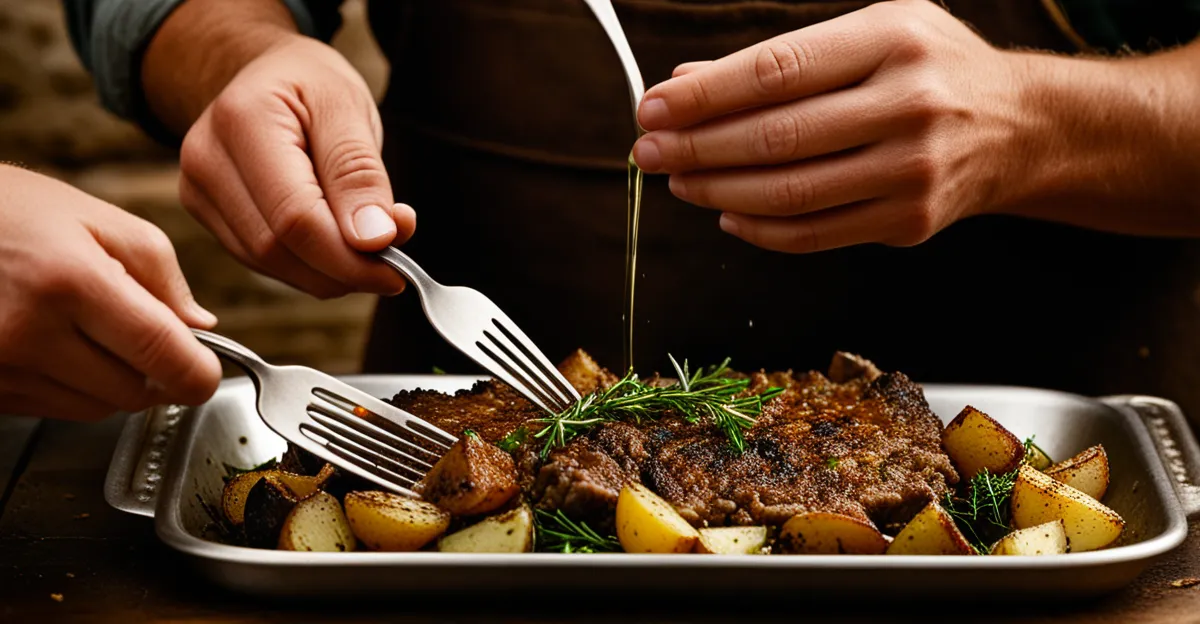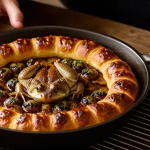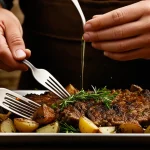Key Components for a Hearty Shepherd’s Pie
Crafting a hearty shepherd’s pie starts with selecting shepherd’s pie essentials that build a foundation of rich flavour and satisfying texture. The best ingredients shepherd’s pie requires begin with high-quality meats. Opt for minced lamb or beef with a good fat content to ensure the filling is juicy and deeply flavoured. Too lean a cut can result in a dry, less satisfying dish.
Vegetables play a crucial role in adding texture and taste. Classic choices include diced carrots, peas, onions, and celery. These vegetables contribute both sweetness and earthiness, balancing the meat’s richness. Using fresh, firm vegetables rather than frozen or canned options enhances texture significantly.
In the same genre : How do you prepare a mouthwatering toad in the hole?
The potatoes chosen for the mash topping are equally important. Floury or starchy potatoes, such as Russets or Maris Piper, produce a creamy, fluffy mash that complements the filling perfectly. Waxy potatoes should be avoided as they tend to yield a gluey texture. To further ensure a creamy mash, boil potatoes until tender, then mash with butter and cream.
By focusing carefully on these shepherd’s pie essentials, you set the stage for a truly fulfilling and delicious meal.
Also read : What Are the Secret Ingredients in Traditional British Recipes?
Techniques for Rich Flavour and Perfect Texture
Achieving depth of flavour shepherd’s pie depends heavily on smart seasoning and careful cooking methods. A well-seasoned filling starts with salt and freshly ground black pepper to enhance the natural taste of the meat and vegetables. Adding herbs like thyme, rosemary, or bay leaves introduces savoury and aromatic notes critical to an authentic shepherd’s pie experience. For an extra boost, a splash of Worcestershire sauce or a dash of tomato paste deepens the flavour profile significantly.
Balancing the ratio between meat, vegetables, and mash is essential for texture tips that please. Aim for roughly equal parts meat and vegetables to avoid a dry or overly dense pie. This balance allows the filling to stay moist without becoming watery, promoting a harmonious bite.
When cooking the filling, slow simmering is key. It allows the flavours to meld and the meat to tenderise, while the vegetables soften evenly without losing texture. Sauté the onions and carrots first to build a base and then incorporate the minced meat to brown thoroughly. This layering of cooking stages unlocks rich flavour shepherd’s pie lovers crave.
By following these shepherd’s pie seasoning and texture tips, you ensure every mouthful is packed with satisfying and well-rounded taste.
Layering and Assembly for Best Results
Perfecting how to layer shepherd’s pie is crucial for an evenly cooked, moist filling and a crisp topping. Start by spreading the meat and vegetable mixture evenly across the baking dish. This base layer should be compact but not compressed, allowing steam to escape and preventing sogginess. Ensuring a consistent thickness encourages uniform cooking throughout.
Next, apply the potato mash topping carefully. Use a spoon or spatula to spread the mash outward from the centre, creating texture with fork tines or the back of a spoon. These ridges catch heat, promoting a golden, crisp finish when baking. Avoid pressing too hard; the mash should remain light and fluffy.
Assembly tricks include slightly undercooking the filling to avoid a watery dish as residual heat completes the cooking in the oven. Also, leave a small gap between filling and mash edges to prevent early browning or cracking.
For shepherd’s pie oven tips, bake at a moderate temperature (around 190°C/375°F) until the top is golden and bubbling. A brief broil at the end can enhance crispiness but watch carefully to prevent burning. Adhering to these layering and oven strategies guarantees a visually appealing and delicious shepherd’s pie.
Common Mistakes and Expert Fixes
Avoiding shepherd’s pie mistakes starts with recognising common pitfalls that can spoil the dish’s texture and flavour. A frequent error is a watery filling, often caused by excess liquid from vegetables or insufficient thickening. To fix this, incorporate expert tips shepherd’s pie like simmering the filling longer or adding a spoonful of flour or cornstarch to bind juices, ensuring a rich consistency.
Another issue is potatoes sinking into the filling, which happens if the mash is too soft or the filling overly loose. Use thicker mash by reducing cream or butter slightly, and allow the filling to cool before layering. This simple adjustment prevents sinking and maintains clear, distinct layers.
Overcooking or burning the topping is another common misstep. Apply troubleshooting shepherd’s pie by baking at moderate oven temperatures and finishing with a quick broil only at the end. Watch closely to avoid charring.
By addressing these mistakes with proven fixes and expert tips shepherd’s pie, you can confidently troubleshoot common challenges for a satisfying, well-executed shepherd’s pie every time.






